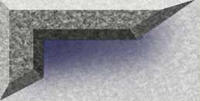|
Pace in Fiction
Pace is one of those terms that gets bandied around a lot in fiction but I don't think I've ever spoken
to a writer who knew definitively how to quantify it - or especially how to improve 'pace' in a story.
Well, I had
a lightbulb moment yesterday and I believe I have come up with something that may help shed some illumination on this
dark and obscure recess of storytelling theory.
It depends on what you're writing of course. You may not want a fast
paced story - you might believe yourself to be more literary than Balzac - or to be above such concerns - or you might not
even care. But if do care about pacing, and want your work published, here's some insight.
Now, first of all we need to accept that there are four main components to fiction,
which are:
1. Story
2. Exposition
3. Character Development
4. Backstory
Story itself can be broken
down into three more categories: action,
dialogue, and description, but for our purposes, we'll lump them together for the moment because it's the ratio of story to
the other three components (2,3,4) that defines 'pacing'.
Simply put, the more 'story' you have compared to exposition,
character development and backstory, the faster the 'pace'.
In practical terms, the 80/20 rules applies. For a normal
fast paced story, you would need 80% story to 20% given over to 2,3,4.
In slow paced stories, you'll find that the
ratio is often reversed, where 2,3,4 become 80% of the fiction - leaving only 20% of the words left dedicated to story. This
often makes for a dull read.
There's a simple test you can do to discover the overall pace of your own story - and
you'll need WORD to do it.
First take your manuscript and identify the 'story' parts of your MS - that is action,
description and dialogue - and highlight those parts in yellow.
Find the exposition - usually those parts that are
passive story told with a lot of 'had's - or any description or action that is fairly static - and highlight them in green.
Find
the character development, where you're explaining the subtleties of your characters or where you have dialogue that's merely
illustrating the characters rather than moving the story forward, and highlight them in blue.
Finally find any backstory
- basically anywhere you feel the need to explain preceding events to the reader - and highlight all those passages in red.
Now
all you need to do is find the 'decrease page size' on your computer until you have you have your entire story - or even novel
- on the screen at the same time.
Is the majority of the WORD screen yellow? It should be. If not you may need to go
back and shorten, rework or even delete anything that isn't yellow, to improve your story's pacing.
Simple enough,
right?
The problem comes, I've noted, when you ask new writers to identify which parts of their fiction fall into which
categories. It's clearly easy enough to identify dialogue - but not all dialogue is 'story' - some of it may be exposition,
backstory or character development masquerading as 'story'.
So too, many new writers believe that exposition - where
the author 'tells' the story in a passive, non engaging way - is actually story. It can be confusing to an author when he
says, "This is story," and you have to say, "No, it's not, it's exposition."
So, what defines story?
Usually
anything that is told in real time - in any tense - about the characters, their actions and some immediate description - that
carries the main narrative forward. It is only those elements that illustrate the plot points (or events) in your story template.
Everything
else is basically fluff - not because it's not important to you - but because it's stuff the reader is not particularly interested
in.
Readers like a little exposition, a little backstory and a little character development but, if you have too much,
you will send your reader to sleep.
Focus on story and you'll keep your reader awake at night, turning those pages
like it's a veritable bestseller.
I hope this simplification helps you.
Keep writing!
-- From the Bob Parnell
|
 |
|

